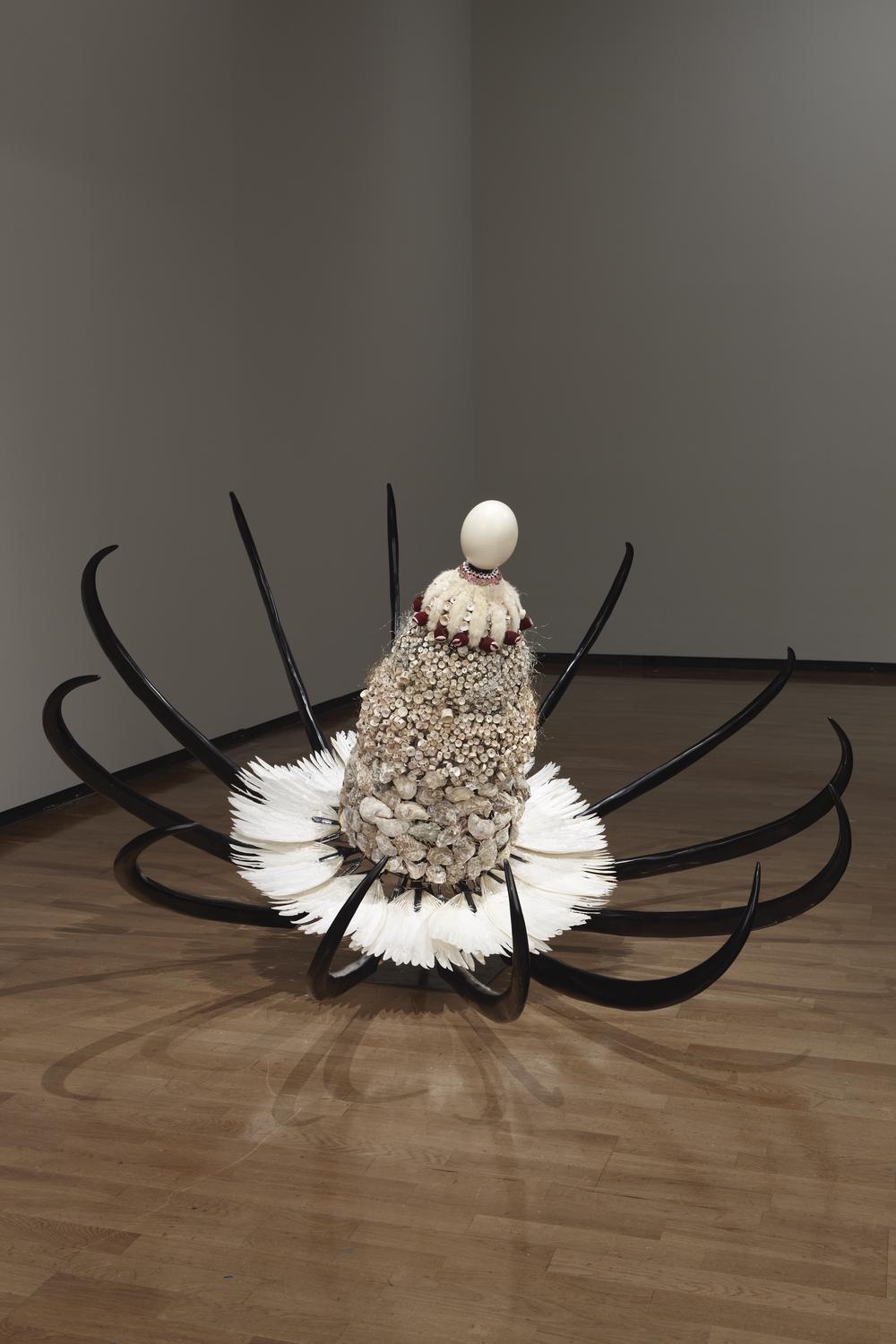Rina Banerjee. Climate and Feminism

Rina Banerjee engages ideas related to intersectional feminism—considering women’s overlapping identities based on race, class, and religion—together with the impacts of climate change. The flower is a common motif in her work, variously referring to femininity, fecundity, and nature. Winter’s Flower… (2010), which is fashioned with materials both faux and natural and borrowed from fashion and home décor, is a kind of chimera—its grafted elements suggest an alternative vision for human interaction with our planet.